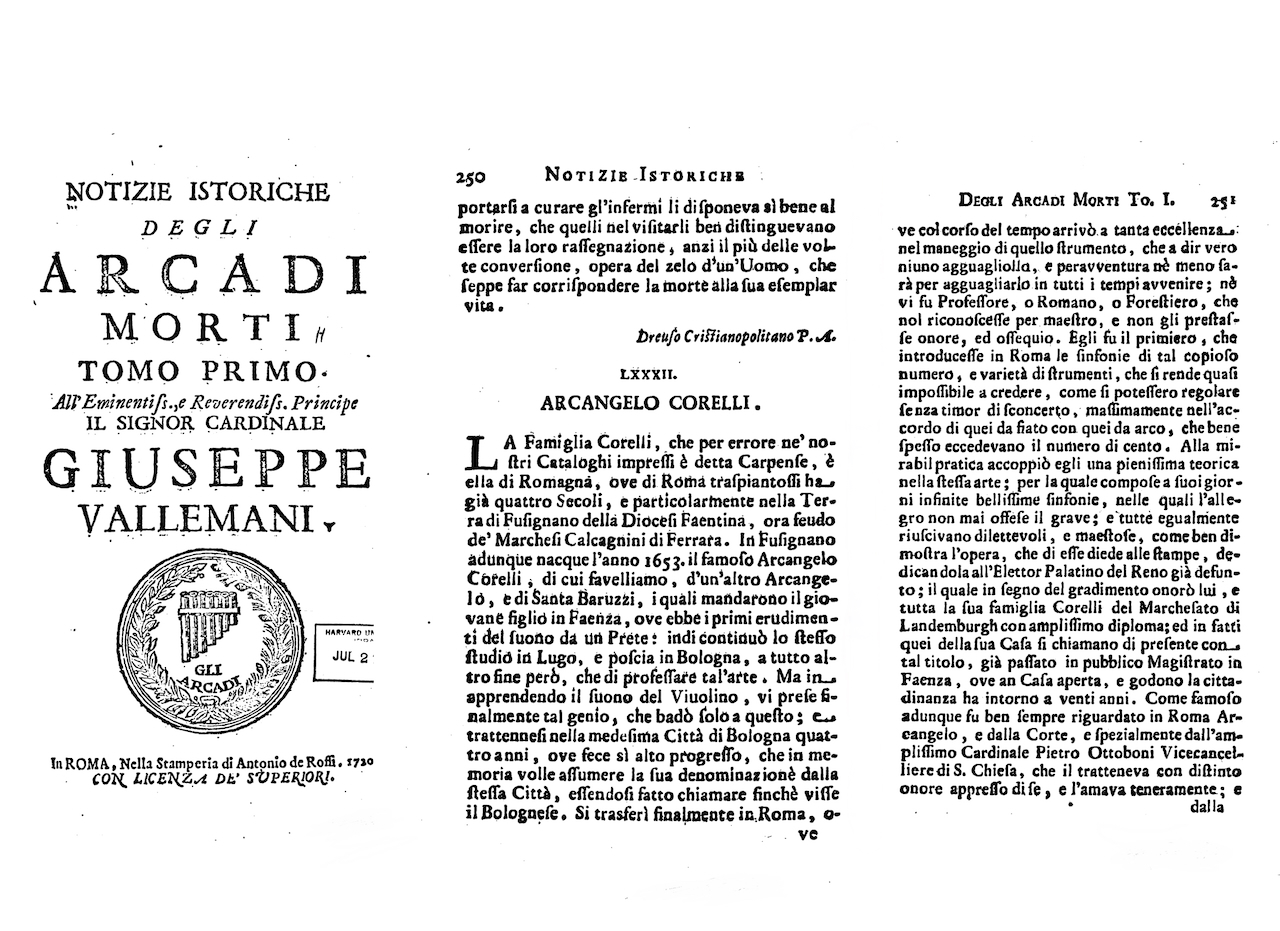One of the main goals of the HIPP movement is to produce a sound as close as possible to the one heard by the composer’s contemporary audience. 1 This is why, in historically informed performances, original instruments, or copies, and original playing techniques, are adopted. It is in this perspective that my artistic research enquires about some aspects of the Roman instrumental practice around 1700. More specifically, the research investigates the use of winds, trumpets in particular, in the Roman so called Sinfonie between the end of the XVII century and the beginning of the XVIII century. A central figure for the instrumental music in Rome during this period is Arcangelo Corelli. As a consequence, this research will largely focus on him, on his role and on his output.
Some aspects of the Roman orchestral practice around 1700 are relatively well documented through an abundant iconography, thanks to several primary sources and through a vast academic literature on the matter. These pieces of information give us a rather clear idea about, for instance, which were the instrumental forces involved in the performances or about the disposition of the players on stage. To a smaller extent, they also inform us about the repertoire performed on those occasions. However, there are aspects that remain unclear, and there is at least one issue where we find an evident gap between the information that can be gathered from primary sources and the survived scores: namely, the apparently common use of trumpets in the orchestral music of the time, and a very scant presence of scores showing the use of these instruments.
Narrowing down the investigation to Corelli, one clear question arises: how can it be that he was praised by contemporaries to excel in blending strings and winds when all his surviving orchestral compositions feature strings only? 2
In the course of this paper we will see that it can be proved not only that Corelli was regularly leading instrumental ensembles that included both strings and winds, but that he was also composing Sinfonie for them, and that at least some of these compositions included trumpets. In the absence of original scores, I have decided on the following research question: how did Corelli's Sinfonie con trombe might have sounded and how can I share this with musicians and audience today?
For a modern performer, filling the gap between the wealth of information regarding a performance practice and the absence of scores witnessing it, is at the same time thrilling and challenging and, in this specific case, it has been already tried by some. However, in my opinion, every attempt to date has failed to take into account all of the musicological information available. As a consequence, their artistic results, independent from their degree of artistry, could hardly claim to have recreated the soundscape of the orchestral music with trumpets of the time. The hypothesis formulated in this research, on the contrary, aims at harmonising a modern artistic approach, modelled on my own personal taste, with the available historical evidence, and it intends to produce a performance not contrasting with the practice of the time. However, as respectful as I will be of the historical evidence, I think it is crucial to state from this early stage that the outcome of the research will lie in the uncertain yet beautiful realm of art, rather than in the one of science, and that I am well aware of the inevitable benefit of the doubt bound to it. Consequently, at the end of this paper, I will not claim to have given a definitive answer to the question “what were the trumpets playing in the Roman Sinfonie around 1700 and in Corelli's Sinfonie in particular”. However, I hope that this research and the audio-video examples that are part of it, will contribute to widening the understanding of one of the most fascinating periods of Baroque Music and of its soundscape.
